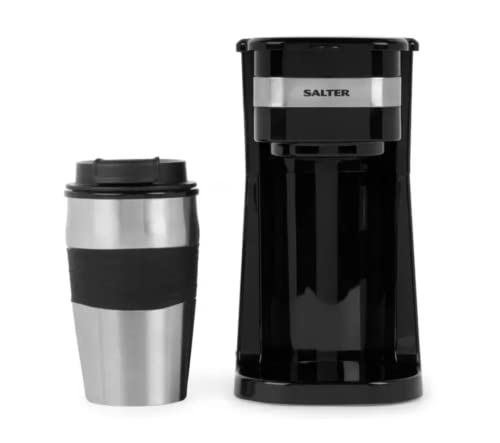
Coffeee
Add a review Follow-
Data di fondazione Luglio 1, 1988
-
Sectors pulizie
-
Offerte di Lavoro 0
-
Visitato 32
Descrizione
7 Things You Didn’t Know About Machine Coffee
 What Goes On Inside a Machine Coffee Maker?
What Goes On Inside a Machine Coffee Maker?
Coffee machines make it simple to take a hot cup of joe in the comfort of your own home. The most popular models include a programmable timer and even an integrated grinder.
Sensors regulate the heating element that revolves around a warming plate every time you switch on the power. It also has a water tube made of aluminum which runs through it.
Cold-Water Tube
A machine coffee maker takes the water you pour into it and turns it into a cup of coffee. This is done by boiling water and forcing it through a system which produces high pressure. These machines utilize up to 15 bars of pressure, compared to coffee percolators that run at a mere one bar.
This reservoir looks like an empty bucket in the bottom of the machine. It is the place where water is stored to make your drink. This reservoir has a hole at the bottom and connects on one side to the tube that is inside the heating element and on the other, to an white tube with an insulation that runs from the bottom of the machine up to the faucet.
When you turn on your machine, the water inside the reservoir passes up into the heating chamber and the thermostat signals it to warm up. As the water gets hotter it expands and pushes onto a screen underneath a portafilter which has been filled with coffee and then tamped down. The pressure causes the screen to pierce through the filter, allowing the espresso to pour into your mug.
The espresso brewed by your machine is a delicious and rich coffee. It can come with varying levels of acidity, based on the kind of beans you choose. If the brew you are drinking is not pleasant, you can try using a different filter or more coarsely ground beans. If the issue persists then you must schedule an authorized service technician to perform the de-liming procedure to clear out your machine. This problem is usually caused by lime scale.
Hot-Water Tube
The white tube that has insulation at the bottom of your machine is called the hot-water tubing. It transfers hot water from the heating unit to the faucet that is on the top of your coffee maker. This water saturates your grounds, bringing their flavors into the coffee pot you are waiting for.
Certain coffee makers have the ability to keep the water warm so that it’s ready when you wake up. This is achieved by using a heater to produce the smallest amount of steam. The steam is then directed towards the spout to keep your coffee warm until you’re capable of pouring it.
While it may seem like coffee makers are complicated and expensive, the majority of models are quite easy to operate and have only a few moving parts. Regular cleaning and maintenance will keep your machine in great condition for a long time.
Many coffee machines come with a built-in grinder for coffee which allows you to add the ground coffee, lock the portafilter in place, and then flip the switch to start the making. The pump will pressurize the hot water until it reaches 220 PSI pressure when the switch is turned.
One of the biggest frustrations when making coffee is that you have refill the reservoir frequently. A few manufacturers have designed coffee makers that can be connected directly to a household water line which allows you to skip the reservoir completely. If you’re a DIYer, there are kits that can convert any machine to a coffee maker with water line connections. The process is more complex and requires drilling holes into your machine to accommodate the adapter. This could weaken the coffee maker’s construction and cause cracks around the areas that were drilled. It is recommended that you purchase a coffee maker that is designed to take a direct water line to get the best results.
Resistive Heat Element
The heater is made of metal and has a special resistance to electricity. It restricts current flow without stopping it entirely, and some of the energy that is resisting it is turned into heat. This is what heats up the water in the boiler of your coffee maker.
The heating element is located on the left side of the machine’s base. It is shaped like the filament of a lightbulb, or the component of an electric toaster. It is made up of an aluminum extrusion that is divided into two sections and a tube to allow water to flow through and a resistive element. (Watch video here). The resistance in this coiled wire is what causes it to warm up when it receives energy.
When you switch on your coffee maker, the element starts heating up the aluminum water tube until it begins to boil. The bubbles will rise through the white tube, and then be sprayed on your ground coffee with the shower head. This water spray sucks up essential oils from the coffee beans when it descends, and also includes caffeine.
If you’re having trouble with your coffee maker, and the hot water isn’t flowing out, it’s most likely due to a defective pressure switch or thermostat for the heating element. Both are able to be tested with a multi meter by using the continuity test. Connect one of the poles to the electrical connector and the second to the body of the flange. It should display a value below 1. If it does not, then the thermostat or switch needs to be replaced.
The reservoir, or water pump, is a different part of your machine that may cause issues. It can become clogged with lime, so you will require running water and descaling agent through it.
Warming Plate
A warming plate is a heated metal surface that keeps the coffee warm after it has been prepared. This coffee maker feature is very popular with diner coffee lovers and is a great feature for any kitchen at home. The warming plate is susceptible to rust and ruin the taste therefore it is crucial to clean it frequently. Cleaning a coffee maker heating surface is best done using a mixture of oxalic and water.
Oxalic acid can be utilized as an effective cleaner to get rid of rust on pipes, sinks and gas stove burners. It can also be used for cleaning various other household objects. It is a highly efficient solution to clean the rusty warming plate of your coffee maker, and it is available from many hardware stores. You must be cautious when using this product, because it could cause burns and other injuries if handled properly.
If you’re planning to clean a coffee maker with rust heating plate, first make sure the coffee maker is disconnected. This will prevent any possible damage that could be caused by the heat of the cleaning products. You should also wear gloves made of rubber as the oxalic acids can be very harsh on your skin.
Pour some white vinegar over the rusted area of the heating plate. This will react chemically and dissolve the rust. Then, use brushes or rags to scrub the area until it’s clean. If your Professional Coffee Machine maker is extremely worn out, you may have to repeat the process several times to get it completely clean. Be sure to wait until the oxalic acids have totally evaporated before plugging your coffee maker in again.
Aluminum Water Tube
The machine will start making coffee as soon as you turn it on. It may seem simple but it’s a long process to turn a few spoonfuls of grounds of coffee and hot water into a steaming hot beverage.
First of all, the cold water flows through a hole in the reservoir’s bottom, and then into the aluminum tube that is beneath the resistive heating element. Then the aluminum water tube starts to heat up and when it gets to its boiling point, bubbles form which push the water up the white tube in the center of your coffee maker.
The hot water squirts from the top of this tube and into a perforated plastic disc known as the shower head (or basket in some machines). Here the hot water falls over the ground coffee and picks up the oil’s essence as it falls.
The water flows through the coffee, and through the filter, it flows back into your pot. The pump’s oscillating pressure is the reason for this. The shearing force generated by the expanding and contracting bubble boundaries separates the coffee ground particles from the water, resulting in a strong espresso-like beverage.
It is crucial to keep in mind that your machine relies on a myriad of components, all of which are interconnected. Any of these components that fail to function properly can affect the entire process so if you notice any strange noises or vibrations while your machine is in operation be sure to check for loose components. Parts that are loose can cause noise and weaken connections, which could lead to additional problems.





